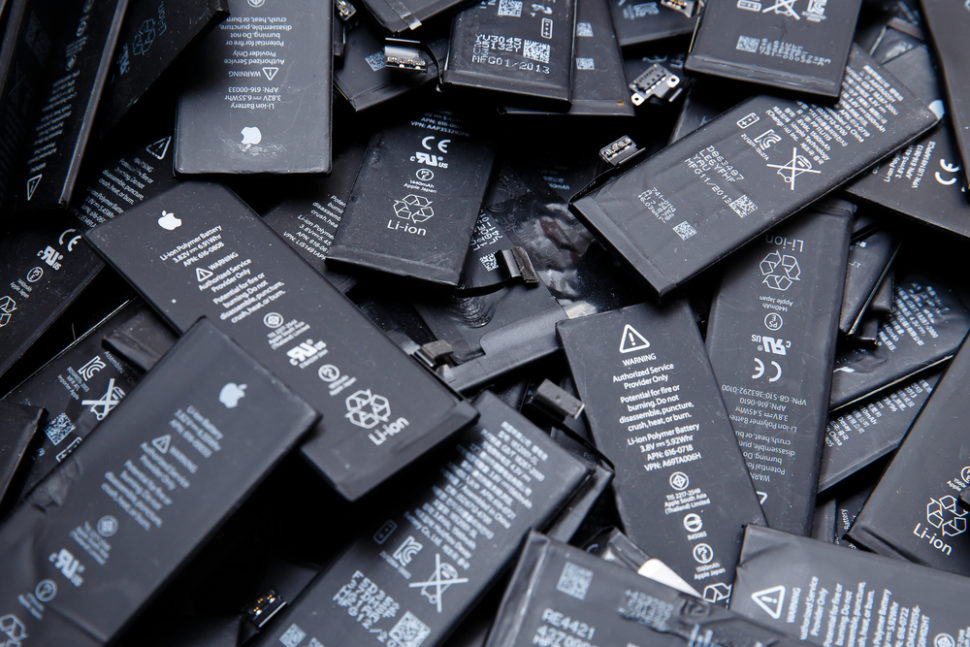Researchers have put their fingers on the causes that lead to lithium-ion batteries decaying and losing efficiency.
In the context of Industry 4.0, mobile devices like smartphones and wearables are now the total norm of society. Every adult in the developed world owns one of these devices — they are integral to our participation in society. Every year brings new advances in accessibility, performance, and design at an ever-increasing pace.
However, these devices rely on lithium-ion batteries. With the increasing demands of our devices, these batteries are struggling to keep up the pace.
Several new battery technologies, such as graphene-based batteries and saltwater batteries, promise a revolution in battery technology which could see new power storage devices that last weeks and fully recharge in seconds.
Other technologies like AORFBs, or Aqueous Organic Redox Flow Batteries, can also overcome limitations regarding energy density and safety.
For the time being, we have to make do with lithium-ion batteries that are relatively big and need recharging on a daily basis.
But it seems that lithium-ion technology may not be doomed after all. A new study may have just found the cause behind the biggest problems of Li-ion batteries.
Lithium-ion Batteries: Three Types of Dendrites, Three Problems
Lithium-ion batteries have some major drawbacks.
In addition to the increasingly scarce deposits of lithium in the world, lithium batteries incorporate other toxic and expensive materials which all weigh down production costs.
Besides cost efficiency, storage capacity, and performance, safety is another problematic area for lithium-ion batteries.
Another main component in lithium-ion batteries is liquid electrolyte that carries the electrical charges between the anode and the cathode.
Electrolyte is a dangerous substance because it can catch fire.
Another issue is irregular lithium formations called dendrites. These grow inside the battery during charging and slowly destroy it.
Dendrite formations can short-circuit the battery and result in fires or even explosions. The most notorious of these issues came with Samsung’s Galaxy Note 7 batteries.
Now, as it turns out, dendrites aren’t all the same.
Can’t see the Forest for the Trees
Researchers from Washington University in St. Louis (WUSTL) say that dendrites come in three different shapes that need to addressing separately.
“If you call them all dendrites, you’re looking for one solution to solve actually three problems, which is impossible,” Peng Bai, who led the research, said. “That’s why after so many years this problem has never been solved.”
Bai’s team looked at where and when dendrites form and identified three distinct types of “fingers, or growth modes, in these lithium metal anodes. They also outline at which current each growth mode appears.”
At a very high current, dendrites grow at the tip into “treelike structures”. Bai’s team calls these “true dendrites”.
Then, below the current’s lower limit “whiskers” grow from the root.
Between the upper and lower limits, “there exists the dynamic transition from whiskers to dendrites” or what Bai calls “surface growth“.
“In order to build a safe, efficient, reliable battery with a lithium metal anode, the three growth modes need to be controlled by three different methods,” said researchers.
The study, published in in the journal Joule, “presents the accurate understanding of each growth mode, which is critical for controlling the hazardous instabilities across the entire range of working conditions.”
Still, the research doesn’t provide clear solutions to address each type of growth formation, but it identifies the root of the Li-ion batteries problem — a major step toward solving them.



















Comments (0)
Most Recent